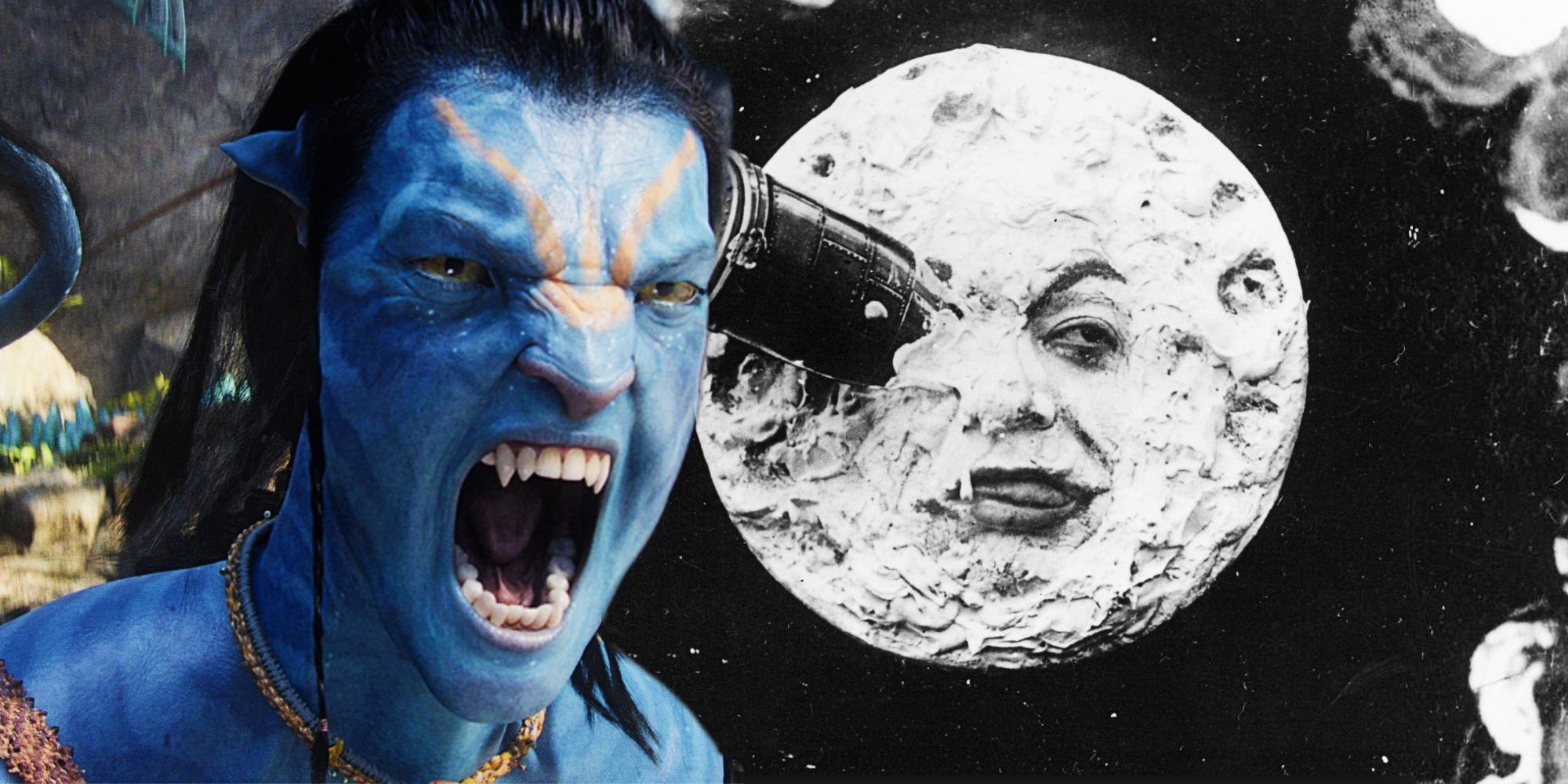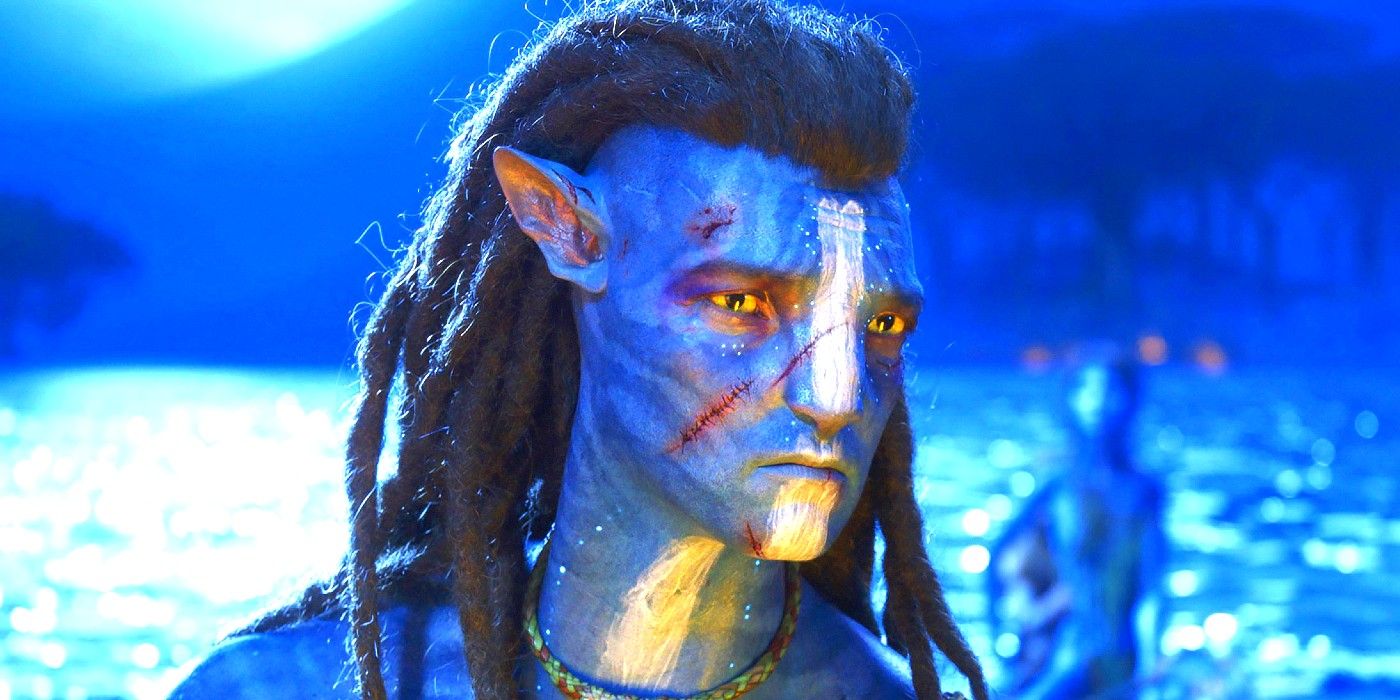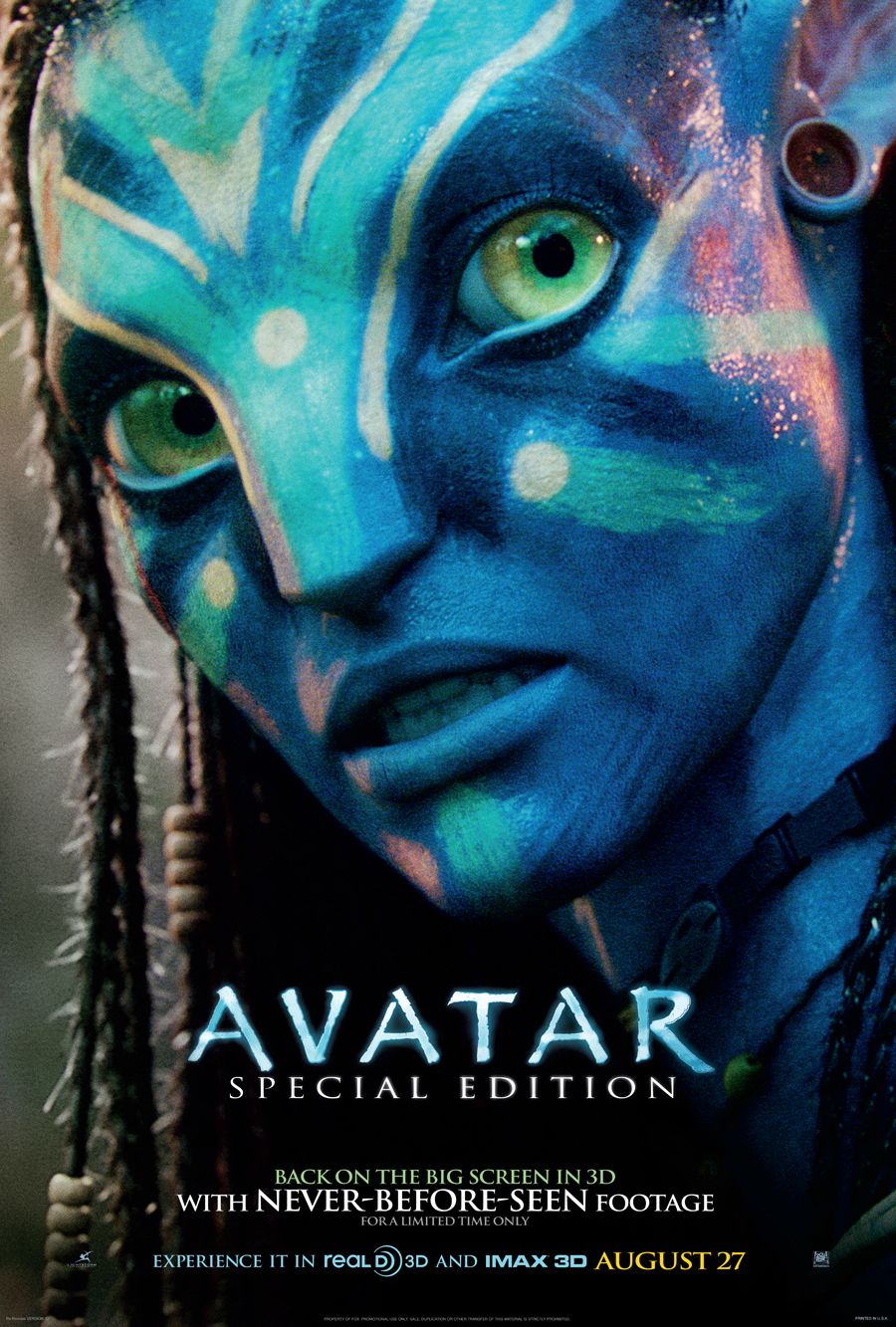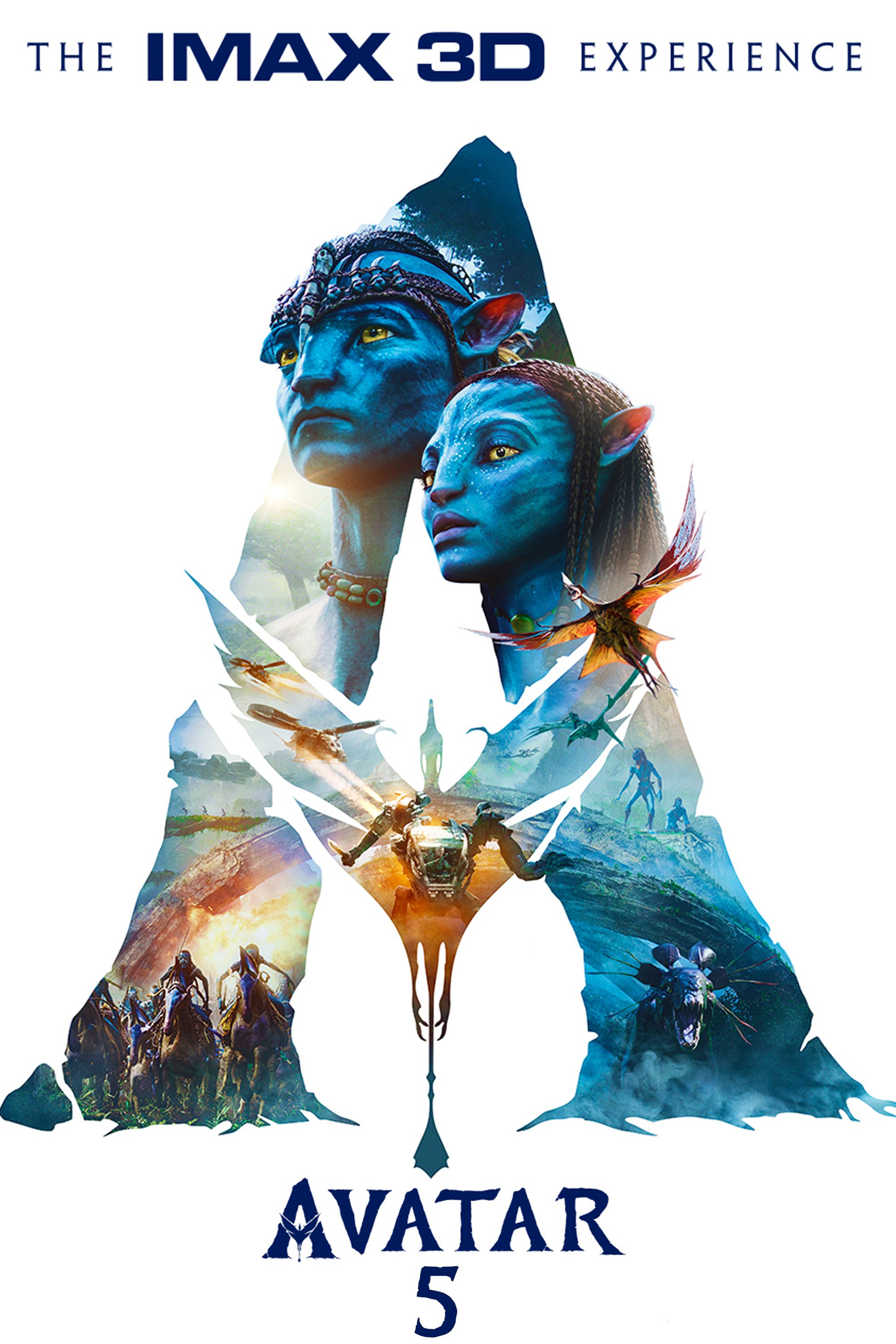James Cameron's Avatar series has a surprising connection to what is widely considered the oldest science fiction film, Georges Méliès' A Trip to the Moon (Le Voyage dans la Lune). Released in 1902, A Trip to the Moon tells the story of a group of explorers who travel to the moon by means of a giant cannon (the Wright Brothers would not invent airplanes for another decade at the time of the film's release). In the film's most iconic shot, the explorers' capsule is shot directly into the Moon's eye. There, they battle a mass of aliens called Selenites, before capturing one and taking it back to Earth.
A Trip to the Moon was one of over 300 silent films that Georges Méliès would make in his career. Costing 10,000 francs, the stylish A Trip to the Moon was the most expensive production that Méliès had helmed yet. Although most prints of the film were in black-and-white, several color prints were also produced. These were hand-colored by two hundred women, who painstakingly painted each frame of the film by hand. A Trip to the Moon is considered to be one of the most important silent films ever made, not only as an early example of the science fiction genre but also for its theatrical flair and anti-imperialist themes.
How Avatar Reflects "A Trip To The Moon"
James Cameron's Avatar reflects A Trip to the Moon in several different ways, despite the over one hundred years between their respective release dates. Both movies are utterly lavish science-fiction productions that echo the imperialist and colonialist behaviors of the countries they were produced in. Both Avatar and the first science fiction movie see humans travel to another celestial body, only to exploit the natives who call that place home. While the styles of each film could not contrast more with each other, Avatar is a stylistic exercise in realism while A Trip to the Moon is explicitly theatrical, the two films are cut from the same cloth, thematically.
The Resources Development Administration (RDA) in Avatar and Avatar: The Way of Water sees the moon of Pandora simply as a means to obtain valuable resources. They massacre any Na'vi that stand in their way, leading to a full-on war between the RDA and the Pandora natives. The same can be said of the explorers in A Trip to the Moon. The explorers kill the first Selenite they encounter, leading to a battle with the rest of the lunar inhabitants. Both A Trip to the Moon and James Cameron's record-breaking Avatar display explicit anti-colonialist themes, by having the human characters bring nothing but death and destruction to the places they explore.
Does Avatar's Message Truly Point To Anti-Colonialism?
While Avatar's message is explicitly anti-colonial, much like A Trip to the Moon, James Cameron's film has been criticized for its use of the "white savior" trope, which critics say undermines the movie's anti-imperialist intentions. Jake Sully, played by the white actor Sam Worthington, leads the Na'vi in their successful battle against the RDA. This centering of a white character in a story about people of color has happened many times throughout the history of cinema; films such as Dances with Wolves and The Help see "good" white characters rescue characters of color from bad circumstances, thereby removing people of color's agency from the narrative.
However, Avatar 2 explicitly deconstructs the "white savior" trope. Jake Sully's actions only lead to the destruction of further Na'vi clans. Sully's militaristic treatment of his family leads to his children actively disobeying him, eventually causing the death of his eldest son, Neteyam. In Avatar: The Way of Water, Jake Sully is anything but a messianic figure; his flawed viewpoint only causes unnecessary deaths. Much like A Trip to the Moon, Avatar is an anti-colonialist film though it does suffer from indulging in the "white savior" trope.






